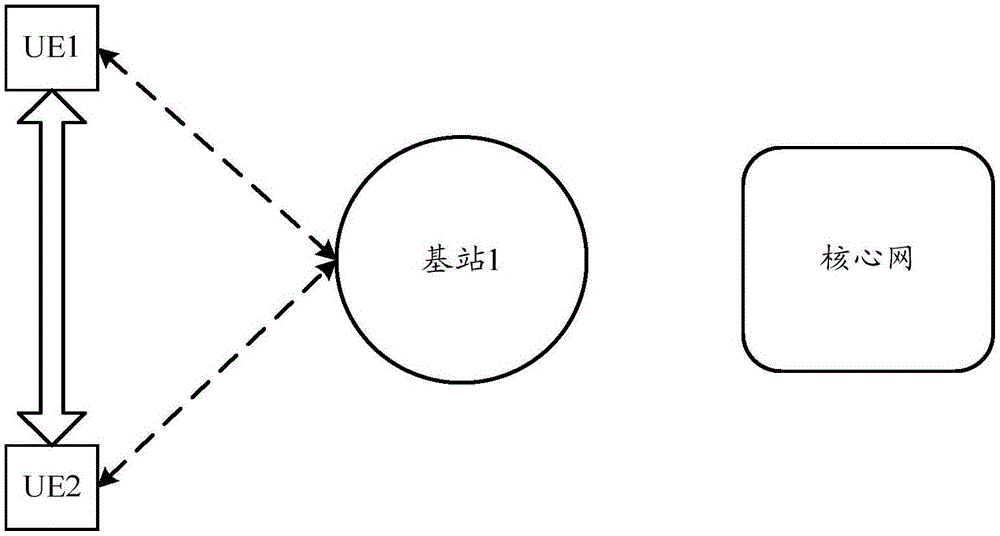Wireless resource selecting method and terminal device
A technology of wireless resources and terminal equipment, applied in the field of communication, can solve the problems of difficult to meet the reliable communication requirements of the Internet of Vehicles, high moving speed, V2X message resource conflict, etc., to avoid continuous congestion, ensure reliability, and reduce the probability of conflict Effect
- Summary
- Abstract
- Description
- Claims
- Application Information
AI Technical Summary
Problems solved by technology
Method used
Image
Examples
Embodiment 1
[0043] An embodiment of the present invention provides a wireless resource selection method, such as Figure 5 shown, including:
[0044] Step 51: The UE intercepts the resources in the resource pool, and obtains the interception result, which at least includes: occupied resources and idle resources;
[0045]Step 52: Select a resource target resource from idle resources based on the interception result;
[0046] Step 53: Send a wireless signal through the selected target resource.
[0047] Here, the resource pool is a set of optional wireless resources configured / preconfigured by the system.
[0048] The interception refers to performing signal detection in wireless resources, and judging whether there are other devices sending wireless signals in the wireless resources.
[0049] The occupied resources are radio resources occupied by signals sent by other UEs.
[0050] Preferably, in the above step 51, the intercepting the resources in the resource pool and obtaining the i...
Embodiment 2
[0075] An embodiment of the present invention provides a wireless resource selection method, such as Figure 7 shown, including:
[0076] Step 71: Sensing occupancy signals sent by other UEs based on the sensing set, and obtaining sensing results;
[0077] Step 72: Based on the sensing result, acquire an idle sensing unit that has not sensed the energy of the occupied signal, and use the resource corresponding to the idle sensing unit as an idle resource;
[0078] Step 73: Select a target resource from the idle resources;
[0079] Step 74: Send a wireless signal based on the selected target resource.
[0080] Here, the occupation signal may be an energy signal used to identify resources are occupied.
[0081] In this embodiment, the available resources of the communication system may be divided into: a sensing set and a signal sending set.
[0082] Wherein, both the sensing set and the signal sending set correspond to a minimum signal sending period, and the UE may send a ...
Embodiment 3
[0106] An embodiment of the present invention provides a wireless resource selection method, such as Figure 10 shown, including:
[0107] Step 1001: Set a sensing window at the location of the first wireless resource, and obtain a sensing result based on sensing the occupancy signal of the sensing window;
[0108] Step 1002: If the sensing result indicates that the energy of the occupied signal is not sensed within the sensing window, select a second wireless resource as the target resource; wherein, the second wireless resource is in the same time domain as the first wireless resource Adjacent, randomly selected in the frequency domain or specified in the frequency domain; or the first wireless resource and the second wireless resource are respectively in adjacent resource periods or sensing periods, and within the resource periods or sensing periods same offset;
[0109] Step 1003: Send a wireless signal based on the selected target resource.
[0110] Wherein, the sensin...
PUM
 Login to View More
Login to View More Abstract
Description
Claims
Application Information
 Login to View More
Login to View More - R&D
- Intellectual Property
- Life Sciences
- Materials
- Tech Scout
- Unparalleled Data Quality
- Higher Quality Content
- 60% Fewer Hallucinations
Browse by: Latest US Patents, China's latest patents, Technical Efficacy Thesaurus, Application Domain, Technology Topic, Popular Technical Reports.
© 2025 PatSnap. All rights reserved.Legal|Privacy policy|Modern Slavery Act Transparency Statement|Sitemap|About US| Contact US: help@patsnap.com



